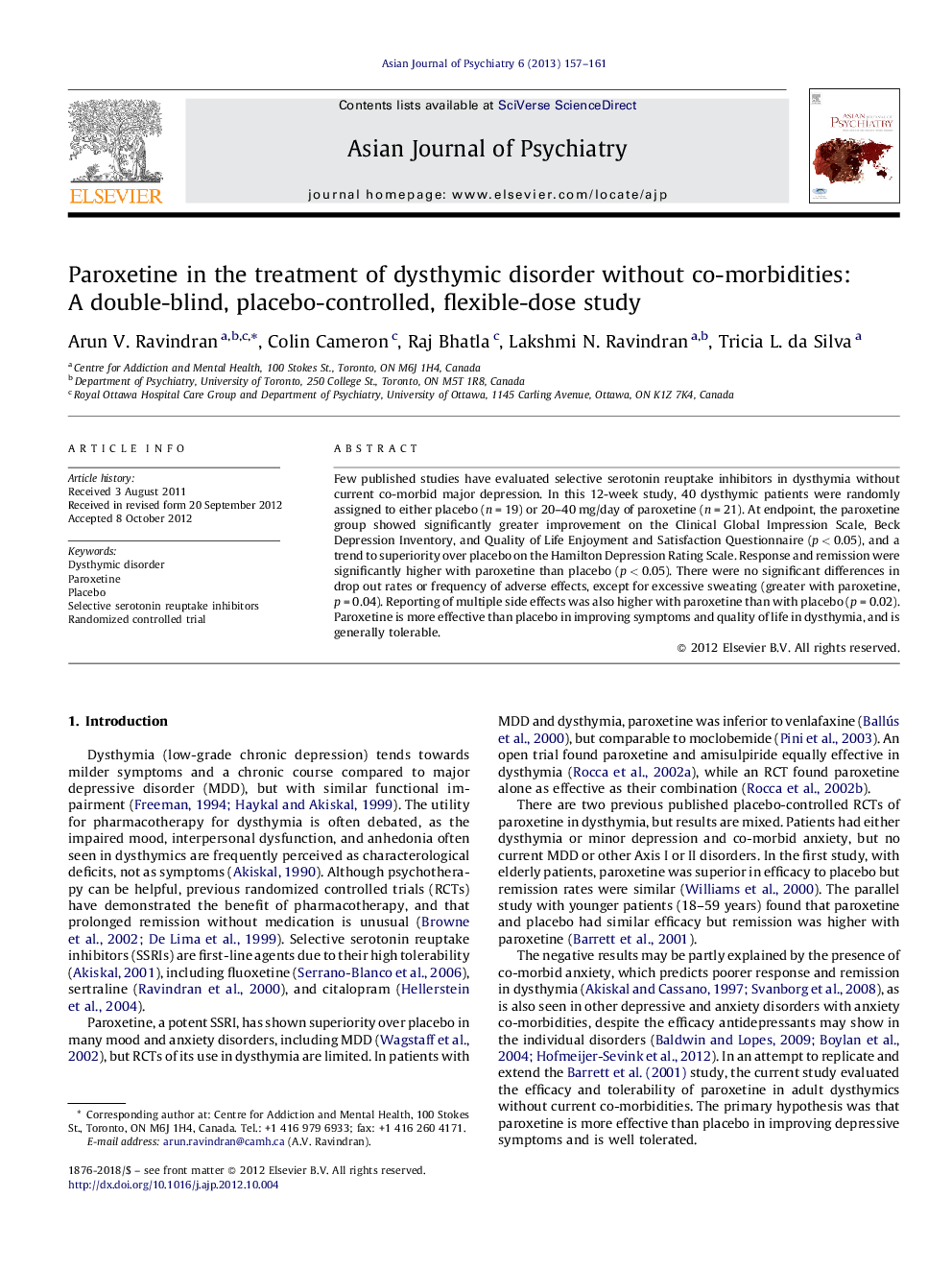| کد مقاله | کد نشریه | سال انتشار | مقاله انگلیسی | نسخه تمام متن |
|---|---|---|---|---|
| 315517 | 1432601 | 2013 | 5 صفحه PDF | دانلود رایگان |

Few published studies have evaluated selective serotonin reuptake inhibitors in dysthymia without current co-morbid major depression. In this 12-week study, 40 dysthymic patients were randomly assigned to either placebo (n = 19) or 20–40 mg/day of paroxetine (n = 21). At endpoint, the paroxetine group showed significantly greater improvement on the Clinical Global Impression Scale, Beck Depression Inventory, and Quality of Life Enjoyment and Satisfaction Questionnaire (p < 0.05), and a trend to superiority over placebo on the Hamilton Depression Rating Scale. Response and remission were significantly higher with paroxetine than placebo (p < 0.05). There were no significant differences in drop out rates or frequency of adverse effects, except for excessive sweating (greater with paroxetine, p = 0.04). Reporting of multiple side effects was also higher with paroxetine than with placebo (p = 0.02). Paroxetine is more effective than placebo in improving symptoms and quality of life in dysthymia, and is generally tolerable.
► The efficacy of paroxetine was evaluated in a placebo-controlled, double-blind design.
► Paroxetine was significantly superior to placebo (even in a relatively small patient sample).
► Paroxetine also improved quality of life significantly, which was not observed with placebo.
► This study confirms that a significant proportion of patients with dysthymia will respond to antidepressant therapy.
Journal: Asian Journal of Psychiatry - Volume 6, Issue 2, April 2013, Pages 157–161